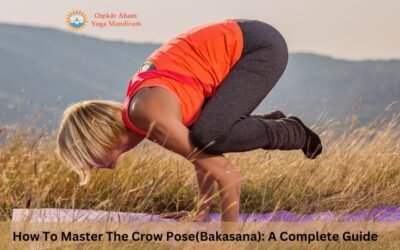As an expectant mother, you may have heard that prenatal yoga is a great way to stay active and reduce stress during pregnancy. But did you know that practising yoga while pregnant can also benefit your baby? In this article, we’ll study the benefits of prenatal yoga and some of the best poses to practice during pregnancy.
The Benefits Of Prenatal Yoga

Prenatal Yoga
Prenatal yoga is a delicate form of exercise that can help expectant mothers remain fit and healthy throughout pregnancy. Some of the benefits of practising prenatal yoga include:
- Reducing stress and anxiety: Pregnancy can be a stressful time, but prenatal yoga can help you relax and stay calm. Yoga breathing techniques, such as pranayama, can help you regulate your breathing and reduce stress and anxiety.
- Improving sleep: Many pregnant women struggle with getting a good night’s sleep, but prenatal yoga can help. By practising yoga before bed, you can relax your body and mind and improve your chances of getting a restful night’s sleep.
- Reducing back pain: As your baby grows, your centre of gravity shifts, putting more strain on your lower back. Prenatal yoga can help you strengthen your core muscles and alleviate back pain.
- Preparing for labour and delivery: Practicing yoga during pregnancy can help you prepare for labour and delivery by improving your stamina, flexibility, and strength.
- Bonding with your baby: Prenatal yoga can also help you bond with your baby by encouraging you to focus on your breath and connect with your body and your baby.
Best Prenatal Yoga Poses
Now that we’ve explored the benefits of prenatal yoga, let’s take a glance at some of the best poses to practice during pregnancy.
1. Cow or Cat pose
Cow pose is an excellent approach to warming up the abdominal muscles gradually. Then, from within, promote the experience of comfort.
Benefits:
This sequence of poses frequently referred to as cat and cow, assists in strengthening and maintaining mobility in the lower spine and abdominal part.
Steps:
- On all fours, place your hands shoulder-width apart and your knees hip-width.
- Inhale and lift the breastbone and tailbone toward the sky while contracting gently in your lower spine in part 1.
- Exhale and wrap your spine in a rainbow form. In the second and third trimesters, ease up on the pelvic tilt and concentrate on the upper body curve in part 2.
Modifications:
You can cushion your knees by placing a folded blanket beneath them. Alternatively, you can perform this routine standing, with your feet hip-width apart, your knees softly bent, and your hands on top of your thighs.
2. Pointer Dog Pose or Table pose
This creates a lengthy energy line that extends in two directions (forward and backwards), similar to the arrow on a compass.
Benefits:
This position is excellent for strength, flexibility (TVA, obliques, and lower back), and coordination training.
Steps:
- With your hands shoulder-width apart and your knees hip-width apart, begin on all fours.
- Inhale your left arm to the sky with your thumb and your right leg to hip height.
- As you stretch the front hand away from the back foot, straighten the spine and experience a mild rise in the belly, there should be physical support below the position (see figure).
- Maintain a long neck and look approximately 12 inches toward the front of the yoga mat.
- Take three to five deep breaths before switching sides.
Modifications:
You can support your knees by placing a folded sheet below them. Bring your back feet to the ground if there is any abdominal tugging.
If you have experienced significant round ligament discomfort during this stage of pregnancy, it is advised that you maintain your back foot on the ground the rest of the time.
3. Down Dog Pose
Down Dog is a mild reversal pose that frequently feels wonderful during pregnancy. Let yourself engage with Mother Earth’s spirit and sense her raising to assist you and your baby.
Benefits:
This pose (also known as Downward-Facing Dog) stretches the backside of the body from head to toe. Down Dog is also an inversion due to the position of the authority just under the heart and the heart underneath the hips.
Reversals assist in delivering fresh blood to the brain and provide a new outlook on the topic.
Steps:
- On all fours, put your hands shoulder-width apart and your knees hip-width apart.
- Lift your hips to the ceiling with extended arms and legs on your exhalation. Remember that the elbows and knees are not locked but flexible.
- When you are in your second or third trimester, having a wider posture can frequently seem far more comfortable. Ensure you gaze at your toes when you look back at your feet.
Modifications:
Avoid this posture if you are experiencing nausea, indigestion, or joint stiffness. Instead, take advantage of the balance on all fours, particularly during vinyasa or flow sequences.
4. Goddess Pose
Consider yourself a dancer with strong legs moving you up and down. The technique appears effortless and attractive, a natural consequence of inner strength and force.
Benefits:
This position develops the leg muscles, focusing on the inner thigh, and, like the Clock Squats, can contribute to the formation of core balancer strength (glutes, quads, hamstrings, abductors, inner thighs, abs, lower back, obliques, and TVA).
Steps:
- Assume a standing position with your legs slightly wider than your shoulders.
- Allow your hips to rotate outward to a 45-degree angle and your knees to face the second toe of each foot (see figure a).
- Maintain a straight spine and forward look while inhaling and bending your knees to a 90-degree angle, maintaining your knees pointed out (see figure b).
- Breathe as you return to standing, focusing on the inner thigh power that assists you in heading back up to a stance. Your abdomen will be gently worked during the activity to help strengthen your body.
Modifications:
If retaining the upper body vertical proves problematic, you can put your hands on the back of a chair and employ it as a ballet bar.
This can assist you in regaining your equilibrium as the load of your expanding tummy and breasts drags your torso forward. Take note that the base of the plié is similar to what yoga calls Goddess Pose.
5. Easy Pose
The position develops a sense of serenity and calmness.
Benefits:
This position is a gentle hip extender that also promotes a feeling of tranquillity.
Steps:
- Start sitting and put your feet crossed most conveniently for you, with either your right or left leg in front.
- Maintain a good posture and notice the elongation in your lateral body (waist).
- By loosening the quadriceps muscles, extend your neck and allow your shoulders to move freely down and away from your ears.
Modifications:
You can perform Easy Pose with your back against a wall if you are exhausted. On the other hand, sitting on top of a sheet or two might feel completely comfortable when you’re in Easy Posture for an extended period (particularly for meditation).
Conclusion
Prenatal yoga is a safe and useful way for expectant mothers to stay active and healthy during pregnancy. By practising prenatal yoga, you can reduce stress and anxiety, improve your sleep, alleviate back pain, prepare for labour and delivery, and bond with your baby. So, if you’re pregnant and looking for a way to stay fit and healthy, consider adding prenatal yoga to your routine.
It is suggested that you do your prenatal yoga poses under professionals. You can also join our 300-Hour Prenatal Yoga Teacher Training Rishikesh course
For more information on yoga aspects., contact us at:
Call/WhatsApp: +91-9997744876
Mail us at: info@yogateachertrainingschool.com




